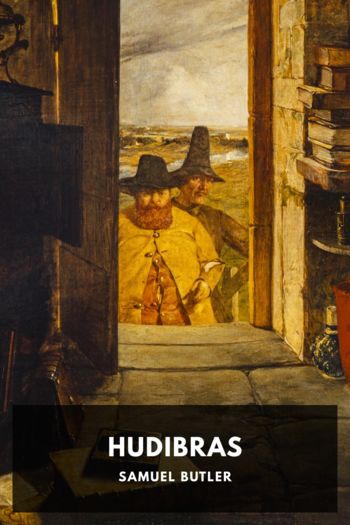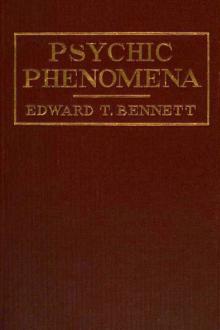The Diary by Samuel Pepys (children's ebooks online TXT) 📕

Description
Pepys’ Diary is an incredibly frank decade-long snapshot of the life of an up and coming naval administrator in mid-17th century London. In it he describes everything from battles against the Dutch and the intrigues of court, down to the plays he saw, his marital infidelities, and the quality of the meat provided for his supper. His observations have proved invaluable in establishing an accurate record of the daily life of the people of London of that period.
Pepys eventually stopped writing his diary due to progressively worse eyesight, a condition he feared. He did consider employing an amanuensis to transcribe future entries for him, but worried that the content he wanted written would be too personal. Luckily for Pepys, his eyesight difficulties never progressed to blindness and he was able to go on to become both a Member of Parliament and the President of the Royal Society.
After Pepys’ death he left his large library of books and manuscripts first to his nephew, which was then passed on to Magdalene College, Cambridge, where it survives to this day. The diary, originally written in a shorthand, was included in this trove and was eventually deciphered in the early 19th century, and published by Lord Baybrooke in 1825. This early release censored large amounts of the text, and it was only in the 1970s that an uncensored version was published. Presented here is the 1893 edition, which restores the majority of the originally censored content but omits “a few passages which cannot possibly be printed.” The rich collection of endnotes serve to further illustrate the lives of the people Pepys meets and the state of England’s internal politics and international relations at the time.
Read free book «The Diary by Samuel Pepys (children's ebooks online TXT) 📕» - read online or download for free at americanlibrarybooks.com
- Author: Samuel Pepys
Read book online «The Diary by Samuel Pepys (children's ebooks online TXT) 📕». Author - Samuel Pepys
↩
Philip Herbert, who succeeded as fifth Earl of Pembroke in 1650. He died December 11th, 1669. ↩
A comedy written by Thomas Killigrew in Switzerland, published in 1663. It is included in Dodsley’s Old Plays, ed. Hazlitt, vol. xiv. ↩
Thomas Clifford, born at Ugbrooke, Devon, August 1st, 1630, and educated at Exeter College, Oxford. He attended Charles II in exile, and represented Totnes in the Convention Parliament and in that of 1661. He was knighted as a reward for the delivery of several speeches on behalf of the royal prerogative. After having distinguished himself at sea and acting as Envoy Extraordinary to the courts of Denmark and Sweden, he was, on November 8th, 1666, made Comptroller of the Household, and on December 5th he was sworn of the Privy Council. In 1672 he was made Secretary of State, on April 22nd created Baron Clifford, and in November raised to the post of Lord High Treasurer, which he held till June, 1673. Died September, 1673, in the forty-fourth year of his age. ↩
Colbert, in his desire to establish French colonies, wished to found one on the Mediterranean coast of Africa. For this purpose the Due de Beaufort, High Admiral of France, took possession, on July 22nd, 1664, of Gigeri, in the province of Bugia, and he placed a garrison there under the command of Lieutenant-General Guadagni. The duke had scarcely retired before the Moors attacked the place in great force, and with such success, that Guadagni thought himself happy in evacuating it with safety. He embarked on the night of the 29th October, abandoning his artillery and stores. The regiment of Picardy perished by shipwreck. —B. ↩
Welwyn. ↩
Jeremiah White, see note 693. ↩
The Protector wished the Duke of Buckingham to marry his daughter Frances. She married, 1. Robert Rich, grandson and heir to Robert, Earl of Warwick, on November 11th, 1657, who died in the following February; 2. Sir John Russell, Bart. She died January 27th, 1721–22, aged eighty-four.
In T. Morrice’s life of Roger, Earl of Orrery, prefixed to Orrery’s State Letters (Dublin, 1743, vol. i, p. 40), there is a circumstantial account of an interview between Orrery (then Lord Broghill) and Cromwell, in which the former suggested to the latter that Charles II should marry Frances Cromwell. Cromwell gave great attention to the reasons urged, “but walking two or three turns, and pondering with himself, he told Lord Broghill the king would never forgive him the death of his father. His lordship desired him to employ somebody to sound the king in this matter, to see how he would take it, and offered himself to mediate in it for him. But Cromwell would not consent, but again repeated, ‘The king cannot and will not forgive the death of his father;’ and so he left his lordship, who durst not tell him he had already dealt with his majesty in that affair. Upon this my lord withdrew, and meeting Cromwell’s wife and daughter, they inquired how he had succeeded; of which having given them an account, he added they must try their interest in him, but none could prevail.” ↩
Samuel Sorbière published his Voyage to England at Paris in 1664, but a translation into English does not appear to have been published until 1709. The work created a great sensation, and Louis XIV showed his displeasure by a temporary banishment of the author. It is, however, entertaining, and can be read with advantage as a picture of the time. Sorbière died in 1670. It is not clear whether Sorbière invented or only repeated the story here related, which has been disposed of by the discovery of Charles I’s coffin in 1813; and, indeed, how any doubt upon this subject could have arisen, seems extraordinary, considering that several persons were present at the interment, and that we have Sir T. Herbert’s testimony as to the fact in his published Memoirs. See also Diary, February 26th, 1665–66, when Pepys was shown the place where the late king was buried in St. George’s Chapel, and Fuller’s Church History, book xi, p. 327. Sir Henry Halford published, in 1813, “An Account of what appeared on opening the Coffin of K. Charles I at Windsor,” which was reprinted in Essays and Orations, 1831, 1842. ↩
No clue to the meaning of the word ora in this position has been found. ↩
William Cecil, second Earl of Salisbury, K.G., who took the side of the Parliament during the Civil Wars. He died December 3rd, 1668, aged seventy-seven. See his character, “despicable to all men,” drawn by Lord Clarendon, History of the Rebellion, book vi, ed. Macray, 1888, vol. ii, p. 542. ↩
Sir John Colladon, M.D., of St. Martin’s in the Fields, see note 1937. ↩
Edward Griffin, of Braybrooke, in Northamptonshire, at this time Lieutenant-Colonel in the Duke of York’s Regiment of Foot Guards, now called the Coldstream; he was raised to the peerage in 1688 by the title of Lord Griffin, and followed the fortunes of his royal master after the Revolution, and was outlawed. Being taken prisoner in the attempted





Comments (0)